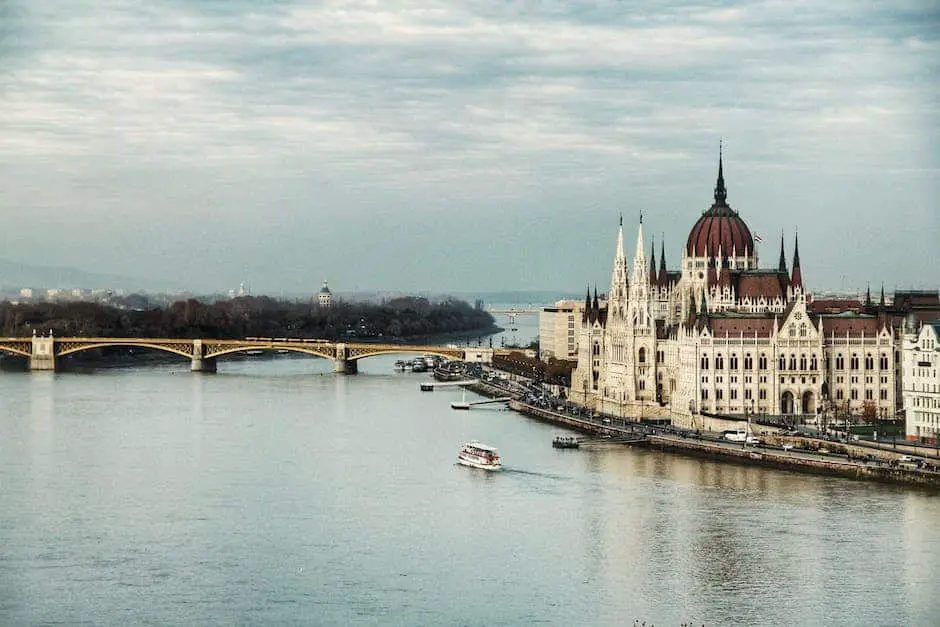
Imagine strolling through the heart of Europe, where the Danube River splits a city of two souls. Budapest, with its architectural tapestry, tells a story that spans centuries. Each building, each cobblestone, whispers tales of conquests, revolutions, and rebirths. As a lover of history and design, I’ve been captivated by how Budapest’s architecture has evolved, reflecting the city’s vibrant past and present.
The Roots of Budapest’s Architectural Identity
The story of Budapest’s architecture begins with the Romans, who left their mark with Aquincum’s ancient ruins. Fast forward to the Middle Ages, and you’ll find Gothic spires reaching for the heavens. The Matthias Church and the Fisherman’s Bastion are prime examples, standing as testaments to a time when fortifications were as crucial as beauty.
But it wasn’t until the Austro-Hungarian Empire’s influence in the 19th century that Budapest’s architecture truly flourished. The city became a canvas for the most ambitious urban planning projects, with grand boulevards and opulent buildings that rivaled Paris.
The Golden Age: Eclecticism and Art Nouveau
At the turn of the 20th century, Budapest embraced Eclecticism. Architects mixed styles, creating unique structures that still define the city’s skyline. The Hungarian Parliament Building is a perfect example, combining Gothic Revival with Renaissance flourishes. It’s not just a building; it’s a symbol of national pride.
Art Nouveau also swept through Budapest, leaving behind gems like the Gresham Palace. Its flowing lines and organic motifs are a feast for the eyes, showcasing the city’s softer side. It’s as if the architects of the time were painting with stone and glass.
Between Wars and Revolutions: Modernism and Its Discontents
The interwar period brought Modernism to Budapest’s streets. Functionality began to trump ornamentation. Yet, this era was short-lived. The devastation of World War Ii left scars on the city that are still visible today. Post-war reconstruction focused on practicality, often at the expense of historical beauty.
Under communist rule, stark, utilitarian structures popped up. These buildings, like the ones in the Újlipótváros district, reflect a period when individual expression was suppressed. They stand in stark contrast to the city’s earlier architectural achievements.
The Revival: Preserving the Past, Embracing the Future
Since the fall of communism, Budapest has been on a journey of architectural revival. The city has worked tirelessly to restore its historic buildings to their former glory. At the same time, it’s embracing contemporary design. The Palace of Arts and the National Theatre are modern landmarks that prove Budapest can honor its past while looking forward.
Walking through Budapest today is like flipping through the pages of an architectural textbook. From Roman ruins to cutting-edge contemporary designs, the city’s buildings tell a story of resilience and reinvention.
Budapest’s Architecture: A Reflection of Cultural Melting Pot
Budapest’s architecture is more than a collection of structures; it’s a reflection of the city’s soul. The blend of Turkish, Austrian, and local Hungarian influences has created a cultural melting pot that’s visible in every facade and courtyard.
It’s this mix that makes Budapest’s architecture so unique. It’s not just about the styles; it’s about the stories they tell and the people who have walked these streets. It’s a living history lesson that continues to evolve.
FAQs About Budapest’s Architecture
- What architectural style is the Hungarian Parliament Building?
The Hungarian Parliament Building is primarily Gothic Revival with a blend of Renaissance and Baroque elements. It’s a stunning example of the eclectic style that characterizes much of Budapest’s architecture.
- Can you see the influence of different empires in Budapest’s architecture?
Absolutely! From the Ottoman-era thermal baths to the Austro-Hungarian grandeur of Andrássy Avenue, the architectural influences of various empires are evident throughout the city.
- Are there any contemporary architectural sites in Budapest worth visiting?
Definitely! The Palace of Arts and the National Theatre are modern marvels that showcase the city’s commitment to contemporary architecture.
Conclusion: The Ever-Changing Face of Budapest
In conclusion, Budapest’s architecture is a vivid chronicle of the city’s history. From its Roman foundations to its modern-day masterpieces, the cityscape of Budapest is a testament to change and continuity. It’s a place where every corner holds a story, every building a memory.
For those of us who’ve wandered its streets and admired its facades, Budapest’s architecture is more than just aesthetics. It’s a narrative woven into the very fabric of the city, a narrative that continues to unfold. As Budapest looks to the future, its architecture will undoubtedly keep evolving, adding new chapters to an already rich history.
So, whether you’re a real estate investor, a history buff, or simply someone who appreciates the beauty of a well-designed city, Budapest’s architecture is sure to captivate and inspire. It’s a city that has mastered the art of blending the old with the new, creating an urban landscape that’s truly one-of-a-kind.
And remember, next time you’re in Budapest, look beyond the surface. Each building, each street has a story to tell. It’s these stories that make Budapest’s architecture not just visually stunning, but deeply meaningful.